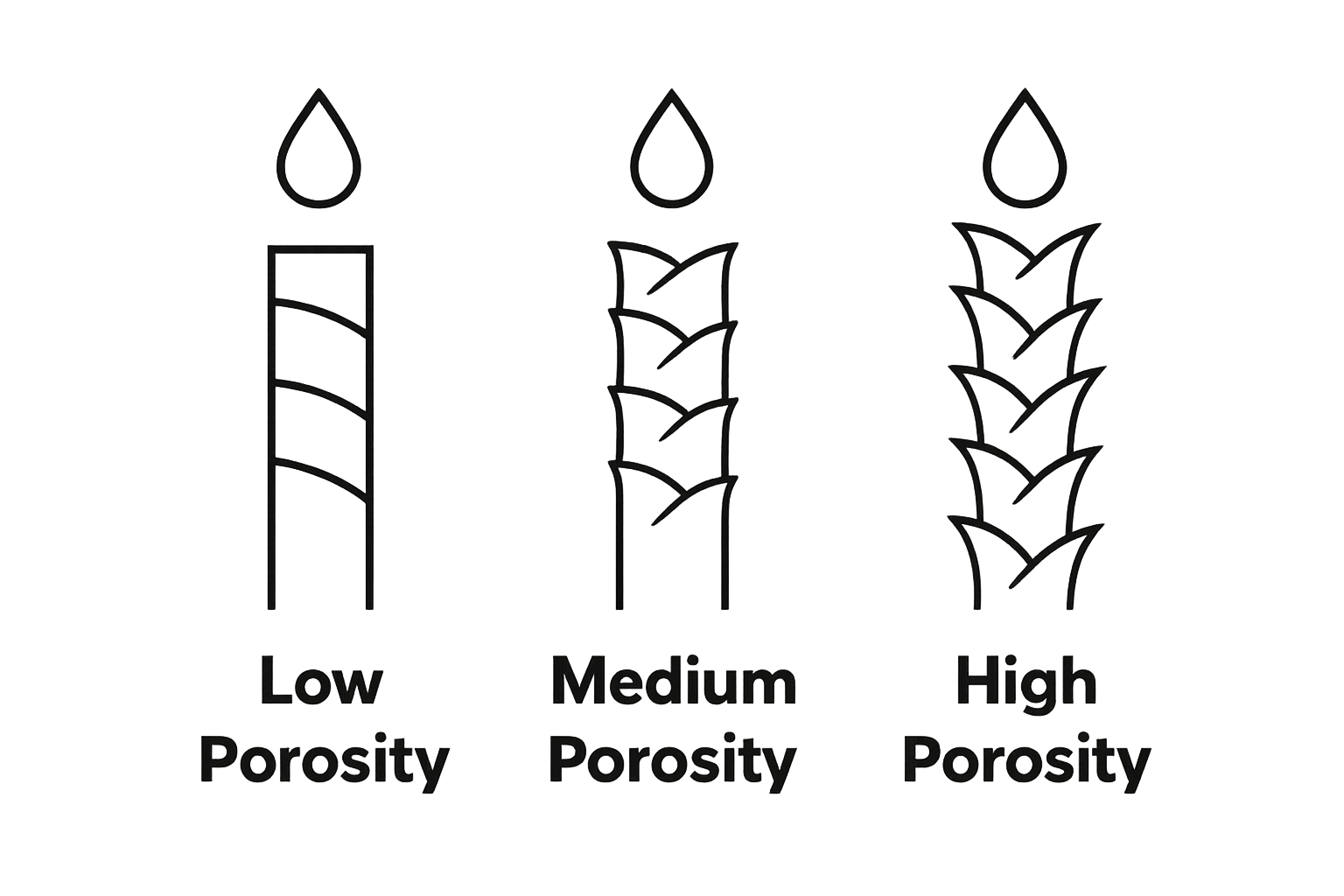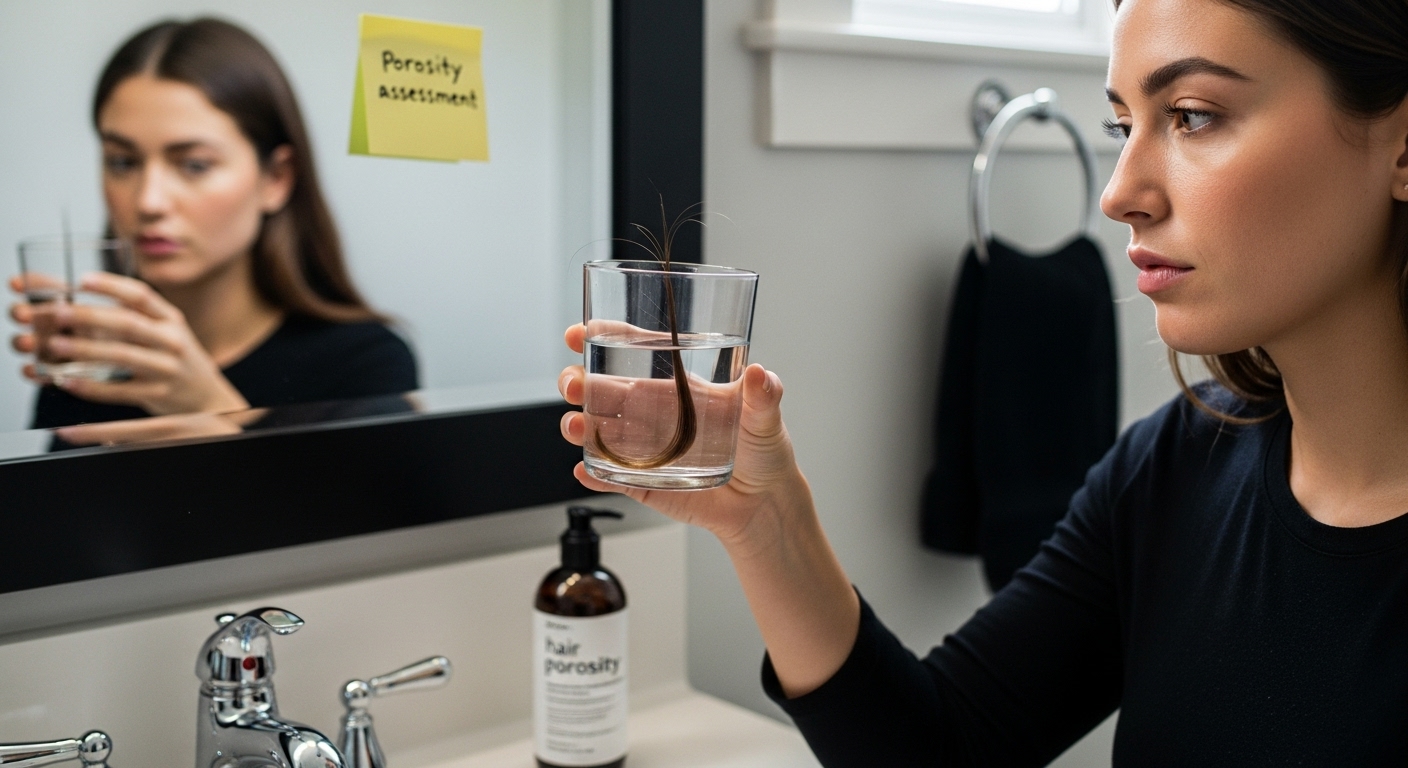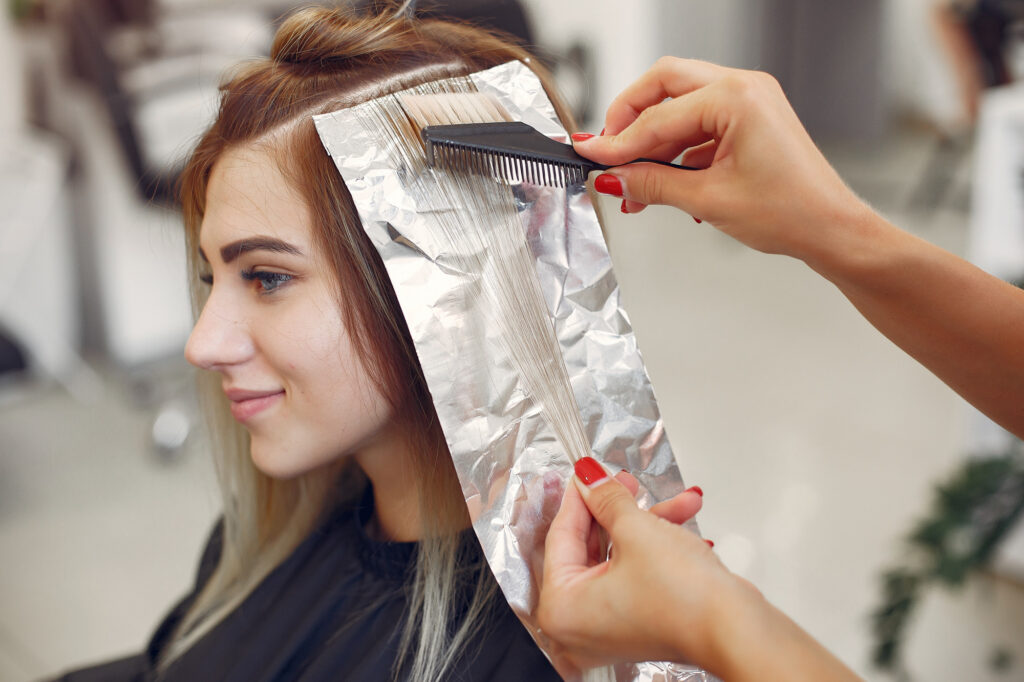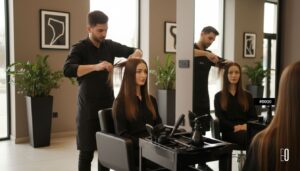Most people focus on hair type and products, but hair porosity actually shapes how your hair looks and feels every day. Shocking, yet only a small percentage of people know that high porosity hair can lose moisture up to twice as fast as healthy hair. What surprises even haircare pros is that changing your routine to match your porosity can turn dull, struggling hair into the healthiest hair you have ever seen.
Table of Contents
- What Is Hair Porosity And Why Is It Important?
- The Science Behind Hair Porosity: How It Works
- Types Of Hair Porosity: Key Characteristics Explained
- The Impact Of Hair Porosity On Hair Care And Styling
- How To Assess Your Hair Porosity For Personalized Care
Quick Summary
| Takeaway | Explanation |
|---|---|
| Understand your hair porosity type. | Identifying your porosity (low, medium, high) is essential for suitable hair care choices. |
| Tailor products to porosity levels. | Different porosity types require specific hair care products for optimal moisture and health. |
| Use the float test for assessment. | This simple at-home test can help determine how your hair absorbs moisture. |
| Adjust styling techniques accordingly. | Your hair’s porosity influences how it responds to heat and styling, necessitating specific care approaches. |
| Monitor and adapt your hair care routine. | Regularly assessing hair porosity can help you make informed adjustments to products and techniques. |
What is Hair Porosity and Why is it Important?
Hair porosity is a critical yet often overlooked aspect of hair health that determines how effectively your hair can absorb and retain moisture. Understanding this characteristic provides invaluable insights into your hair’s unique structure and helps you develop personalized hair care strategies.
The Science Behind Hair Porosity
At its core, hair porosity describes the hair strand’s ability to absorb and hold moisture through its cuticle layer. Think of the hair cuticle like tiny overlapping scales that can be tight, loose, or damaged. According to research from the International Journal of Trichology, these cuticle characteristics directly influence how hair interacts with water, styling products, and environmental conditions.
Key aspects of hair porosity include:
- Low Porosity: Cuticles are tightly compact, making moisture absorption challenging
- Medium Porosity: Balanced moisture absorption and retention
- High Porosity: Cuticles are lifted or damaged, allowing rapid moisture absorption but quick moisture loss
Why Hair Porosity Matters
Knowing your hair’s porosity is crucial because it impacts every aspect of hair care. Different porosity levels require unique approaches to conditioning, styling, and product selection. For individuals with high porosity hair, which is often more prone to damage, understanding these characteristics can prevent breakage and maintain hair health.
Understanding your hair porosity helps you:
- Select appropriate hair care products
- Develop targeted conditioning strategies
- Prevent unnecessary hair damage
- Optimize moisture retention
- Enhance overall hair appearance and texture
By recognizing and respecting your hair’s unique porosity profile, you can transform your hair care routine from a generic approach to a personalized, scientifically informed strategy that promotes healthier, more resilient hair.
The Science Behind Hair Porosity: How It Works
Hair porosity is a complex biological mechanism that involves intricate interactions between hair’s structural components. Understanding the scientific principles behind hair porosity reveals how microscopic changes can dramatically influence hair health and appearance.
Cuticle Structure and Moisture Dynamics
The hair cuticle acts as a sophisticated protective barrier composed of overlapping keratin-based scales. According to research published in the Journal of Cosmetic Science, these microscopic scales determine how water and nutrients interact with the hair shaft. When the cuticle is intact, it creates a controlled environment for moisture absorption and retention.
The cuticle’s behavior can be characterized by three primary states:
- Sealed Cuticles: Tightly compressed, minimizing moisture penetration
- Slightly Lifted Cuticles: Moderate moisture exchange occurs
- Significantly Raised Cuticles: Maximum moisture absorption and potential damage
Molecular Interactions and Porosity Mechanisms
Hair porosity operates through complex molecular interactions between keratin proteins and external substances. The hair’s ability to absorb moisture depends on hydrogen bonding and electrostatic interactions within the protein structure. These interactions determine how quickly water molecules can penetrate and be retained within the hair shaft.
Key factors influencing porosity include:
- Genetic predisposition
- Chemical treatments
- Heat styling frequency
- Environmental exposure
- Mechanical damage from brushing and styling
These molecular mechanisms explain why some hair types readily absorb moisture while others resist water penetration. The intricate balance of protein structures and external factors creates a unique porosity profile for each individual, making hair care a highly personalized experience.
By comprehending these scientific principles, individuals can develop more targeted and effective hair care strategies that respect their hair’s inherent molecular characteristics.
Types of Hair Porosity: Key Characteristics Explained
Hair porosity is not a one-size-fits-all characteristic but a nuanced spectrum with distinct categories that profoundly impact hair care strategies. Understanding these variations is crucial for developing personalized hair maintenance approaches.
Low Porosity Hair: The Protective Barrier
Low porosity hair represents the most resistant hair type, characterized by tightly compacted cuticle layers that create significant barriers to moisture absorption. According to research from the International Journal of Trichology, these hair types exhibit minimal moisture penetration, which can make hydration challenging.
Characteristics of low porosity hair include:
- Slow moisture absorption
- Water beading on hair surface
- Resistance to chemical treatments
- Difficulty in maintaining moisture
Medium Porosity Hair: The Balanced Approach
Medium porosity hair represents the ideal hair type, offering balanced moisture absorption and retention. The cuticle layer is slightly more flexible, allowing controlled moisture exchange without excessive vulnerability. This porosity type responds most predictably to standard hair care treatments and styling techniques.
Key attributes of medium porosity hair involve:
- Efficient moisture absorption
- Consistent styling results
- Balanced protein and moisture retention
- Minimal structural damage
High Porosity Hair: The Vulnerable Type
High porosity hair features significantly lifted or damaged cuticle layers, creating maximum moisture absorption potential but minimal retention capabilities. These hair types are most susceptible to environmental damage, chemical treatments, and structural breakdown.
Distinctive features of high porosity hair include:
- Rapid moisture absorption
- Quick moisture loss
- Increased vulnerability to breakage
- Higher susceptibility to environmental damage
Recognizing your specific hair porosity type empowers you to select targeted hair care products, develop personalized conditioning strategies, and implement protective techniques that address your hair’s unique structural needs.
To help clarify the differences between hair porosity types, here is a table comparing their key characteristics and how each type responds to care and environmental factors.
| Porosity Type | Cuticle Structure | Moisture Absorption | Moisture Retention | Common Characteristics |
|---|---|---|---|---|
| Low Porosity | Tightly compacted | Slow | Excellent | Water beads on surface, resistant to chemicals |
| Medium Porosity | Slightly lifted, flexible | Efficient | Balanced | Consistent styling, healthy appearance |
| High Porosity | Lifted/damaged, porous | Rapid | Poor | Quick to frizz, prone to dryness and breakage |

The Impact of Hair Porosity on Hair Care and Styling
Hair porosity is not merely a scientific concept but a critical factor that fundamentally transforms hair care and styling approaches. Understanding how porosity influences product absorption, styling techniques, and overall hair health enables individuals to develop more effective and personalized hair maintenance strategies.
Product Selection and Absorption Dynamics
Product effectiveness is directly linked to hair porosity, creating a nuanced landscape of hair care solutions. According to research from the International Journal of Trichology, different porosity levels dramatically alter how hair absorbs and retains moisture and treatment products.
Key considerations for product selection include:
- Low Porosity Hair: Requires lightweight, heat-activated products
- Medium Porosity Hair: Benefits from balanced moisture treatments
- High Porosity Hair: Needs protein-rich, heavy moisturizing products
Styling Techniques and Structural Integrity
Hair porosity profoundly influences styling outcomes and hair’s structural resilience. The way hair responds to heat, chemical treatments, and mechanical styling varies significantly based on its porosity level. High porosity hair, for instance, is more vulnerable to damage from excessive heat and chemical processing.
Important styling considerations across porosity types include:
- Heat protection strategies
- Appropriate conditioning techniques
- Minimizing mechanical stress
- Tailored chemical treatment approaches
Long-Term Hair Health Management
Recognizing hair porosity transforms hair care from a generic approach to a targeted, scientific strategy. By understanding the unique characteristics of your hair’s porosity, you can implement proactive measures that protect, nourish, and enhance your hair’s natural structure.
Comprehensive hair health management involves:
- Regular moisture assessment
- Customized treatment protocols
- Protective styling techniques
- Periodic porosity evaluation
By embracing a porosity-specific approach, individuals can optimize their hair care routine, minimize damage, and achieve healthier, more vibrant hair.
How to Assess Your Hair Porosity for Personalized Care
Determining your hair porosity is a critical step in developing a tailored hair care strategy that addresses your unique hair needs. Understanding how to accurately evaluate your hair’s moisture absorption and retention characteristics empowers you to make informed decisions about product selection and treatment approaches.
The Float Test: A Simple Diagnostic Method
The float test offers a straightforward, at-home method for assessing hair porosity. According to advanced hair science research, this technique provides initial insights into your hair’s moisture dynamics.
Performing the float test involves:
- Cleansing a single strand of hair thoroughly
- Placing the clean hair strand in a glass of room temperature water
- Observing how the hair strand behaves within 2-4 minutes
Test Result Interpretations:
- Low Porosity: Hair remains floating on water surface
- Medium Porosity: Hair suspends midway in the water
- High Porosity: Hair rapidly sinks to the bottom of the glass
Strand Texture and Visual Assessment
Beyond the float test, visual and tactile examination provides additional porosity insights. Hair texture, shine, and response to moisture offer valuable diagnostic information about your hair’s structural characteristics.
Key visual and tactile assessment indicators include:
- Hair’s reaction to water absorption
- Texture after air drying
- Shine and reflection properties
- Elasticity when gently stretched
Professional Diagnostic Techniques
For individuals seeking precise porosity measurements, professional diagnostic techniques offer more comprehensive assessments. These advanced methods provide scientific insights beyond basic home testing.
Professional assessment techniques encompass:
- Specialized microscopic hair strand analysis
- Advanced moisture mapping technologies
- Comprehensive cuticle layer evaluation
- Precise hydration retention measurements
By combining multiple assessment methods, you can develop a nuanced understanding of your hair’s unique porosity profile, enabling more targeted and effective hair care strategies.
Below is a table outlining three key methods to assess hair porosity, including at-home and professional techniques, to help you find the best fit for your needs.
| Assessment Method | How It Works | Indicators/Results |
|---|---|---|
| Float Test | Strand placed in water to observe its sinking speed | Floating = Low, Suspended = Medium, Sinks quickly = High |
| Strand Texture/Visual Check | Touch and observation after washing/air drying | Sticky/greasy feel, shine, elasticity, and water absorption rate |
| Professional Diagnostics | Microscopic exam and advanced moisture mapping | Scientific cuticle analysis, precise hydration and porosity measurement |

Upgrade Your Hair Care With a Personalized Porosity Consultation
Struggling to manage dryness, frizz, or lifeless locks despite your best efforts? Understanding your unique hair porosity is the first step toward healthier, more radiant hair. At Joel C Ma Hair Studio, our expert team uses years of professional experience to bring the science of hair porosity to life, tailoring each service to your specific hair needs.

Let our skilled hair artists translate insights from this comprehensive hair porosity guide into a customized in-salon treatment plan. Book a style consultation for hands-on porosity assessment and expert advice. Experience the confidence that comes from personalized care at a top-tier La Jolla salon. Visit Joel C Ma Hair Studio today and unlock the secret to luxurious, resilient hair. The look you deserve starts now.
Frequently Asked Questions
What is hair porosity?
Hair porosity is the hair’s ability to absorb and retain moisture, influenced by the condition and structure of the hair cuticle.
How can I determine my hair porosity?
You can assess your hair porosity using methods like the float test, where you clean a strand of hair and place it in water to observe its behavior. Low porosity hair floats, medium porosity hair suspends, and high porosity hair sinks quickly.
What hair care products are best for low porosity hair?
Low porosity hair benefits from lightweight and heat-activated products that assist in moisture absorption while preventing buildup.
Why is understanding hair porosity important?
Understanding your hair porosity helps tailor your hair care routine, allowing you to choose the right products, develop effective conditioning strategies, and prevent unnecessary damage.
Recommended
- Understanding Caring for Long Hair: Essential Insights – Joel C Ma Hair Studio
- What is a Hair Glaze? Understanding its Benefits and Use – Joel C Ma Hair Studio
- What is Hair Toning? Understanding the Basics and Benefits – Joel C Ma Hair Studio
- Understanding Hair Care for Athletes: Keeping Your Style Strong – Joel C Ma Hair Studio





